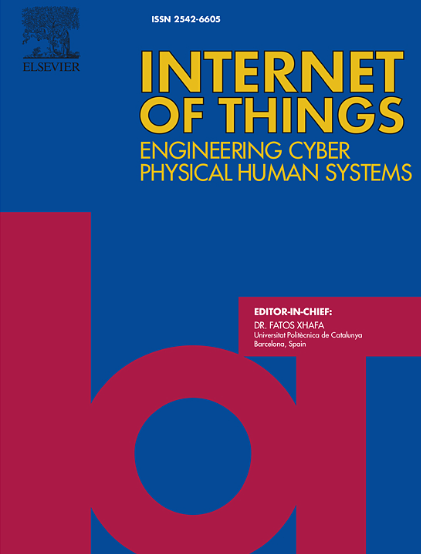A rendezvous of computing and communication services at the optical layer in optical computing–communication integrated network
IF 6
3区 计算机科学
Q1 COMPUTER SCIENCE, INFORMATION SYSTEMS
引用次数: 0
Abstract
With the significant advancements in optical computing platforms recently capable of performing various primitive operations, a seamless integration of optical computing into very fabric of optical communication links is envisioned, paving the way for the advent of optical computing–communication integrated network, which provides computing services at the ligthpath scale, alongside the traditional high-capacity communication ones. This necessitates a paradigm shift in optical node architecture, moving away from the conventional optical-bypass design that avoids lightpath interference crossing the same node, toward leveraging such interference for computation. Such new computing capability at the optical layer appears to be a good match with the growing needs of geo-distributed machine learning, where the training of large-scale models and datasets spans geographically diverse nodes, and intermediate results require further aggregation/computation to produce the desired outcomes for the destination node. To address this potential use case, an illustrative example is presented, which highlights the merit of providing in-network optical computing services in comparison with the traditional optical-bypass mode in the context of distributed learning scenarios taking place at two source nodes, and partial results are then optically aggregated to the destination. We then formulate the new routing, wavelength and computing assignment problem arisen in serving computing requests, which could be considered as an extension of the traditional routing and wavelength assignment, that is used to accommodate the transmission requests. Simulation results performed on the realistic COST239 topology demonstrate the promising spectral efficiency gains achieved through the optical computing–communication integrated network compared to the optical-bypass model.
光计算-通信综合网络中计算与通信业务在光层的会合
随着近年来光学计算平台的显著进步,能够执行各种原始操作,设想将光计算无缝集成到光通信链路的每个结构中,为光计算-通信集成网络的出现铺平了道路,该网络提供光路规模的计算服务,同时提供传统的高容量通信服务。这就需要光节点架构的范式转变,从传统的光旁路设计(避免光路干扰穿过同一节点)转向利用这种干扰进行计算。这种光学层的新计算能力似乎与地理分布式机器学习日益增长的需求很好地匹配,在地理分布式机器学习中,大规模模型和数据集的训练跨越地理上不同的节点,中间结果需要进一步的聚合/计算才能为目标节点产生期望的结果。为了解决这个潜在的用例,本文给出了一个说明性的例子,该例子突出了在分布式学习场景中提供网络内光计算服务与传统光旁路模式相比的优点,这些场景发生在两个源节点上,然后部分结果光聚合到目的地。然后提出了在服务计算请求时出现的新的路由、波长和计算分配问题,这可以看作是传统路由和波长分配的扩展,用于适应传输请求。在真实的COST239拓扑上进行的仿真结果表明,与光旁路模型相比,通过光计算-通信集成网络实现了有希望的频谱效率增益。
本文章由计算机程序翻译,如有差异,请以英文原文为准。
求助全文
约1分钟内获得全文
求助全文
来源期刊

Internet of Things
Multiple-
CiteScore
3.60
自引率
5.10%
发文量
115
审稿时长
37 days
期刊介绍:
Internet of Things; Engineering Cyber Physical Human Systems is a comprehensive journal encouraging cross collaboration between researchers, engineers and practitioners in the field of IoT & Cyber Physical Human Systems. The journal offers a unique platform to exchange scientific information on the entire breadth of technology, science, and societal applications of the IoT.
The journal will place a high priority on timely publication, and provide a home for high quality.
Furthermore, IOT is interested in publishing topical Special Issues on any aspect of IOT.
 求助内容:
求助内容: 应助结果提醒方式:
应助结果提醒方式:


